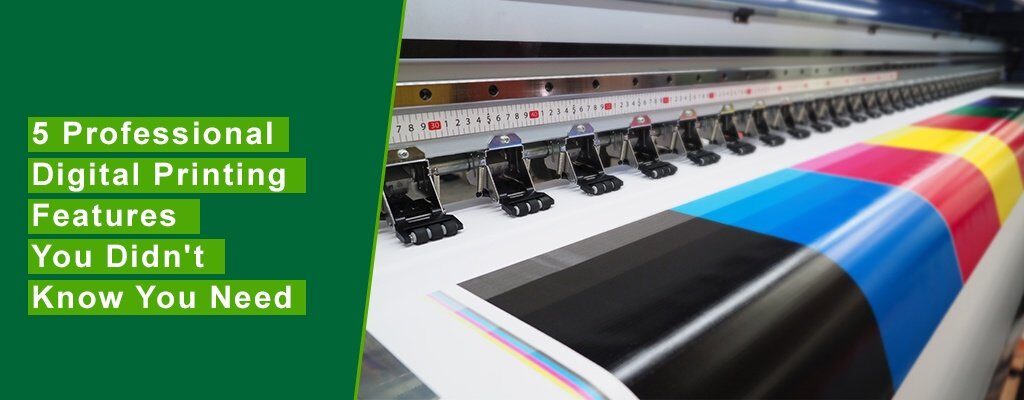Recognizing How Digital Printing Transforms the Printing Sector
The printing industry, long steeped in typical methods, is going through an extreme transformation with the introduction of electronic printing. This cutting-edge technology, which eschews the requirement for printing plates, allows quick production and modification, improving the landscape of print communication. With its potential to spur interaction via personalized content and to provide sustainable options, it's clear that electronic printing is greater than a technical breakthrough; it's a critical game changer. How exactly does it revolutionize the industry? Let's explore.
The Evolution of Digital Printing: A Brief Review
Because its beginning, digital printing has actually undergone considerable makeovers, constantly changing the printing industry. With the development of the 90s, digital printing innovation started to mature, and the market observed the introduction of direct imaging presses, which removed the need for printing plates. As the brand-new millennium unravelled, advancements in innovation better spurred the growth of electronic printing, leading to the production of high-speed inkjet printers.

Unpacking the Modern Technology Behind Digital Printing
Diving into the intricacies of electronic printing technology, one runs into a rich tapestry of advanced machinery and complex formulas. At the heart of this process exists a digital photo, which is refined by software program that splits it right into a grid of dots. These dots are then exchanged a digital code. This code is analyzed by the printer, which uses it to specifically deposit beads of ink onto the substrate. The beads are so tiny and accurate that they develop a picture that is virtually equivalent from the initial. This elaborate system, strengthened by sophisticated software program and high-resolution imaging, has changed the landscape of the printing sector, paving the method for extraordinary levels of detail and precision.

The Advantages of Digital Printing for Organizations
Comprehending the modern technology behind digital printing gives a clear photo of its accuracy and detail. For services, this translates right into numerous advantages. Digital printing provides extraordinary speed, allowing companies to fulfill tight due dates without endangering on quality. Next, it lowers costs as there are no plates or physical configuration, making it best for small-volume printing jobs. Additionally, this innovation supplies superior consistency with each print browse this site outcome, removing variations typically seen in standard approaches. Lastly, digital printing is eco-friendly, utilizing much less ink and generating much less waste. The complete possibility of electronic printing is recognized when utilized for personalization have a peek at these guys and personalization, a topic that will be covered in deepness in the following section.
The Function of Digital Printing in Customization and Personalization
While traditional printing approaches battle with customization and personalization, electronic printing succeeds in these areas. It enables the very easy modification of designs, without the demand for costly and time-consuming plate adjustments (print on demand). This allows companies to customize products to individual clients, meeting details requirements and enhancing consumer fulfillment
Digital printing additionally enables for variable information printing, where elements such as text, graphics, and photos may be altered from one published piece to the following, without decreasing the printing process. This is specifically advantageous for straight advertising and marketing campaigns, where individualized messaging can significantly enhance feedback rates. By doing this, electronic printing not just revolutionizes the printing market however additionally transforms the way services connect with their customers.
Evaluating the Ecological Influence of Digital Printing
Although go to my blog electronic printing has been lauded for its duty in modification and personalization, it is essential to analyze its ecological impact. Digital printing can be much less inefficient than conventional approaches, since it operates on a 'print on need' basis, getting rid of the need for huge print runs that can result in surplus and waste. While electronic printing has numerous benefits, its ecological impact needs to be conscientiously taken care of.
Final thought
To conclude, electronic printing has changed the printing industry, supplying fast, cost-effective, and high-grade services. It facilitates personalization, enhancing client engagement, and utilizes a lasting print-on-demand model. As this modern technology continues to progress, its impact on service interaction, customer contentment, and environmental sustainability comes to be increasingly profound. Recognizing these changes is important for businesses to take advantage of the advantages of electronic printing effectively.